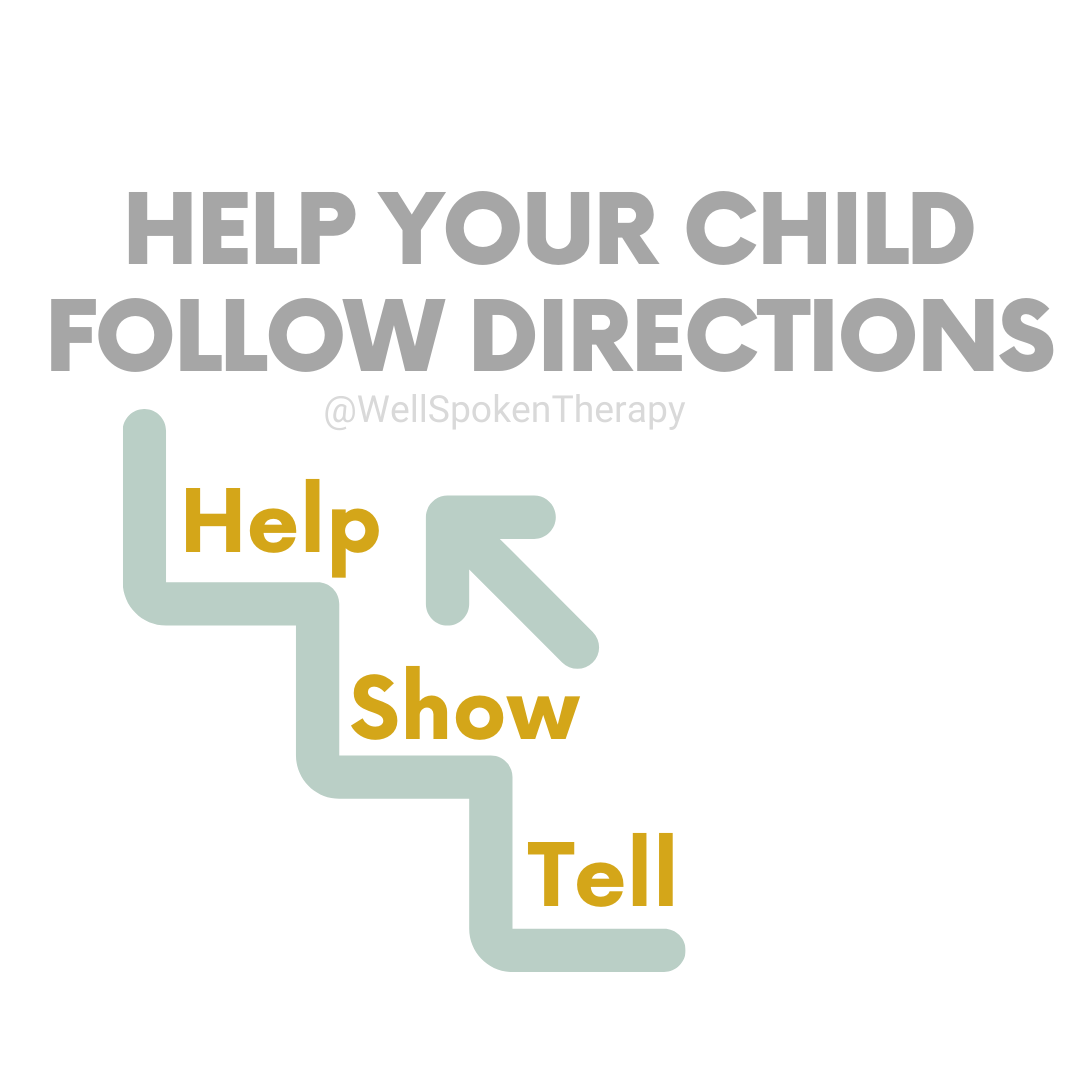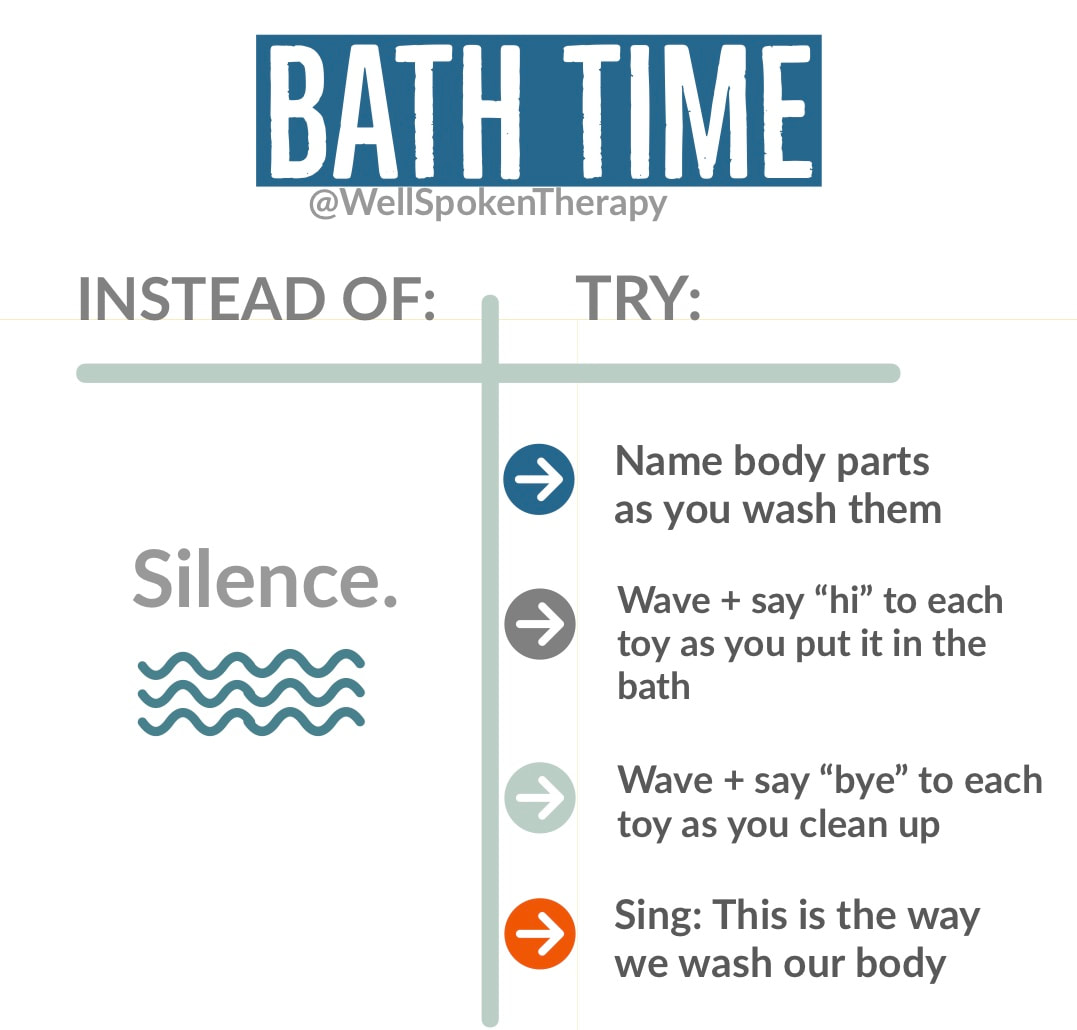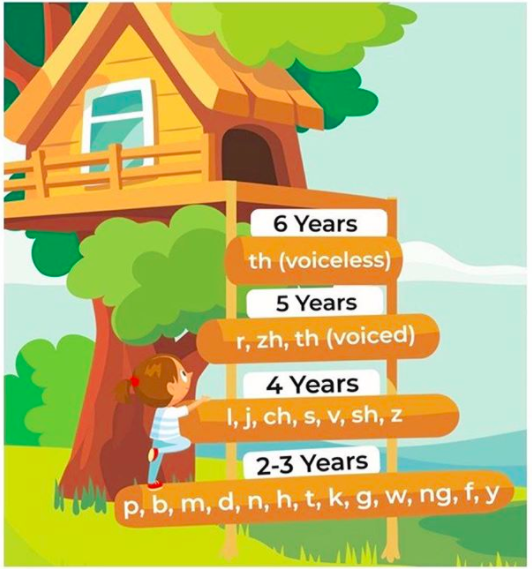|
Have you ever wondered, is my child ignoring me or are they not understanding what I’m saying? If so, this post is for you!
The brilliant Laura Mize recommends this gem of a strategy to help children follow directions, regardless of the reason they’re having trouble. How to: ⭐️First, TELL your child: “Get your shoes.” ⭐️Then, SHOW your child: Point to the shoes + say “Get your shoes.” ⭐️Last, HELP your child: Guide your child’s hands to pick up the shoes + say “Get your shoes.” Notice how we start with the least amount of help and only add more assistance as needed. Try this strategy out and let me know how it goes! Everyday routines are a great time to talk, sing, and connect with our little ones. Try these fun, simple ways to engage with your child during bath time. If you need a little quiet time - that's okay. We all do sometimes. Consider bookmarking this post and giving these ideas a try when you feel up to it.
McLeod and Crowe (2018) looked at 15 speech acquisition studies to determine the average age children learn to produce English consonants.
"zh" is the sound made in measure. Voiced "th" is the sound made in that. Voiceless "th" is the sound made in bath Difficulty pronouncing age expected sounds is a possible sign of a speech sound disorder, which has been linked to reading difficulties. If your child is difficult to understand or is frustrated when not understood, we can help! It happens frequently. A parent confides in me that they feel guilty for not getting help for their child sooner. The story often goes like this: The parent suspects a problem and raises the concern to a friend, family member, or parenting group on social media, who offers well-intentioned advice like, “don’t worry, my son/cousin/next door neighbor didn’t speak until he was four years old and just graduated from Harvard Law.” Now I, as much as the next person, love a story where the underdog goes on to show the world who is boss however, as a pediatric Speech-Language Pathologist (SLP), I cringe.
I’m going to let you in on a little secret. No one has a crystal ball to know whether your child’s communication difficulty will resolve itself or be a longer-term issue. The truth is, while occasionally children do “grow out of” a speech or language problem on their own, other times they do not. While we can’t predict the future, an assessment of the potential problem will reveal whether help is warranted. The good news is, early intervention reduces the likelihood of a long-lasting impact. So…what’s a parent to do? 1. Trust your gut. When it comes to your child, you are the expert. If you suspect there is a problem with your child’s communication skills, you’re usually right. Pursuing a professional evaluation is never a waste of time or money. If you learn that your child’s development is on track, you’ll rest easier having that information. If an assessment indicates your child does need support, then you’ll be empowered to get them they help they need. The sooner you obtain skilled intervention, the less “catching up” your child will have to do. 2. Seek professional expertise When your child has a toothache, you take her to the dentist. When it comes to concerns about your child’s communication, I encourage you to place your trust in a licensed Speech-Language Pathologist. We spend years earning a graduate degree in communication disorders, complete over 1600 hours of supervised clinical experience, and once licensed continue to build our expertise through hands on therapy and hours of continuing education each year. It would be unrealistic to expect another professional, even a well-informed pediatrician, to possess that level of specialized knowledge. SLPs are language development experts and therefore uniquely qualified to address concerns about your child’s communication development. Our scope of practice spans the evaluation and treatment of individuals experiencing difficulty with speech sounds (pronunciation), receptive language (understanding what is said), expressive language (formulating sentences), pragmatics (social skills), fluency (stuttering), and swallowing, to name a few. 3. Avoid being misled by confusing terminology Milo is a 2-year-old who says about 45 words consistently. When his parents don’t know what he wants, he grunts, cries, or tantrums. Milo’s mom notices her son’s peers seem to be using many more words and even putting 2-words together. She wonders if Milo’s communication development is on track. A quick internet search for communication development leads her to a website such as the Mayo Clinic, which lists vocabulary milestones. She reads that by 2 years of age, the milestone is 50 spoken words. Since Milo nearly meets the milestone, his mom feels relieved and decides to wait and see how he develops rather than consult a professional. Seems logical, right? What Milo’s mom doesn’t realize is that while the terms milestone and average are often used interchangeably by resources and professionals alike, they actually mean two very different things. A milestone represents what 90% of children are able to do by a certain age and is the minimal expectation of a child’s progress. On the other hand, average is what 50% of children are able to do by a certain age, therefore making it a better measure of typical development. Confusion over these terms leads many parents to believe their child’s language development is on track when in reality it might not be. Returning to Milo’s story, the vocabulary milestone for a 2-year-old is 50 words, whereas the average child at this age uses 200-300 words. Thus, he is not only slightly behind, but rather he is performing below the bottom 10% of his same-age peers. When a child’s communication skills fall below the milestone, it's a good idea to seek a professional evaluation. 4. Gather more information An evaluation is an assessment of your child’s communication strengths and areas of need. Vocabulary concerns are one reason you might seek an evaluation. Other reasons might include your child struggles to understand what is said (e.g. follow directions, answer questions), express messages (e.g. formulate sentences, use correct grammar), demonstrates frustration when trying to communicate, or is difficult to understand. The results of the evaluation guide next steps. If your child’s skills appear age appropriate, nothing else may be necessary. If not, intervention will be recommended. 5. Know where to get help Once you decide it is necessary to get your child professionally evaluated, you may wonder where to turn. Here are some options to consider: Regional Center (children 0-3 years): Pro: Low-cost services for families in financial need Con: Must max out insurance coverage and/or demonstrate financial hardship before financial assistance kicks in Public School (3-21 years): Pro: Free Cons: Can take several months, child must show problems accessing education/be significantly behind same-age peers to qualify for therapy Health Insurance: Pro: Possibly more economical Cons: May require a referral from a doctor, frequent coverage limitations, in-network providers may have long wait times, therapy often provided by Speech-Language Pathologist Assistants Private Therapy: Pros: More choice in therapists, convenience (typically greater flexibility in service location – teletherapy, your child’s home/daycare/private school – and scheduling), generally shorter or no wait time for evaluations, easier to get help before your child is extremely behind, no doctor’s referral or insurance approval necessary, may be covered by out-of-network benefits Cons: Potentially more costly When it comes to your child, you are the expert. When it comes to communication development, trust a licensed SLP to guide you. If you have questions about your child’s communication development, I’d love to help! Email Natalie@WellSpokenTherapy.com to schedule a free phone consultation. As a graduate student, my first therapy sessions with preschoolers were an utter failure. Picture children rolling on the floor, crawling under tables, and acting silly when it was time to work. To say I felt exasperated and helpless would be an understatement. Before these preschoolers could work on their speech and language skills, I needed their cooperation. But, how?
Here are a few pointers I learned from skilled mentors, my own research, and trial and error. Not only do these approaches work well in the therapy room, I later discovered these strategies worked magic at home with my own young child. Whether your child has a language delay or not, try these five strategies to encourage the little one(s) in your life to cooperate. 1. Eye Level Getting down to your child‘s eye level is a non-verbal way to say - we’re in this together. Also, it helps your child focus his/her attention on what you are saying. 2. Choices This is an ideal technique for children who are natural leaders or who like to be in control. Use this strategy to create a win-win situation. Your child wins by feeling empowered. S/he gets to pick what happens first. You win because the job gets done. Here's what it looks like: If your child has to brush teeth and put on shoes before heading out for the day, it doesn’t really matter in what order that happens as long as it gets done, right? You might say: What do you want to do first? Brush teeth or put on your shoes? 3. First X, then Y Thanks to the simple, succinct language used, this strategy is particularly helpful for children with language delays, or those in the early stages of language development. When possible, try pointing to what you are talking about. This gives added visual support to early communicators, who might not yet understand the exact words you are using. Here's what it looks like: Say your child is upset because he wants a cookie before dinner. You might say: First dinner (point to dinner plate), then cookie (point to cookie). Say your child refuses to clean up before going to the park. You might say: First clean up (point to toys), then park (point to door). 4. Set Expectations in Advance. Talk to your child BEFORE entering a situation. Why? Because you're more likely to get your point across when everyone is calm and less distracted. Let your child know in simple terms what is expected. It’s much easier to set expectations beforehand, than it is to reel back a situation gone off the rails. Here's what it looks like: Before entering a restaurant you might say: Our restaurant rules are - stay in your chair and say please/thank you. Before a play date, you might say: When we play with friends, we will use gentle hands and take turns. 5. Use a Timer For young children, who do not yet have a firm understanding of time, a sand timer or phone timer is your best friend. A timer provides a visual representation of how long something will take. Here's what it looks like: For the preschoolers struggling to transition between tasks, you might say: The timer is set for one minute. When it goes off, it's time to [insert task here]. For the child who is reluctant to engage in a less preferred task, you might say: We're going to [insert task here] for XX minutes, then we'll take a break. For the child who needs help focusing: The timer is set for 5 minutes, let's see if you can get dressed before the timer goes off. Do these strategies work every time? No. Do they work much of the time? Yes. As a Speech-Language Pathologist or parent, it helps to have a variety of behavioral tools in your arsenal. What works one day, might not the next. I'd love to know: What are your go-to strategies with your child? |




